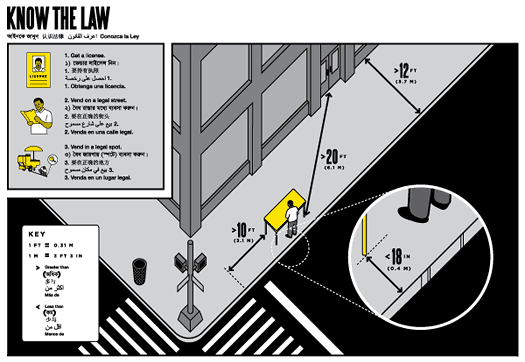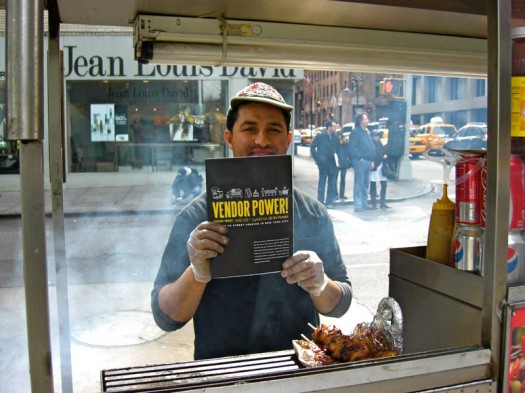org
Vendor Power!
Candy Chang has written up an excellent overview of her process producing a visual policy brief for Making Policy Public. Street vendors in New York City can be hit with a $1,000 fine for such minor infractions as not displaying their badge prominently enough, or for not placing their cart precisely in relation to the curb or store fronts. To clarify the confusing regulations from multiple NYC agencies, the Street Vendor Project and Center for Urban Pedagogy worked with Candy to create this visual, multi-lingual fold-out poster that demystifies vendor rights and regulations (along with a few fun facts.) Check out Candy’s write-up and download a PDF of the poster. Knowing one’s rights can potentially make a big difference in the lives of street vendors and their families.
Ateliers Populaires
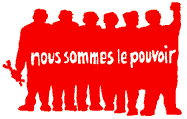
Anti-Nazism and the Ateliers Populaires: The Memory of Nazi Collaboration in the Posters of Mai ’68 is an excellent essay on the origins and context of the Ateliers Populaires, a collective poster workshop supporting the striking students and workers in France. Among the things I learned:
- There were several Ateliers Populaires in several cities in France. Paris alone had 6.
- The posters appeared in something of a vacuum, and were all the more shocking because of this. Political posters had not been seen on the streets in 20 years.
- The first posters were originally intended as fine art prints for sale to raise money for the striking workers, not as street art, and were originally printed by offset lithography, a more labor intensive process. These were taken out to the streets by popular demand where they inspired others to do the same.
- The style and simplicity of the designs was a function of both the medium and the conditions of production: the low-tech, improvised silkscreen apparatus and the incredible speed at which they were produced.
- The cheap newsprint paper they printed on were remnants donated by newspaper printers, who couldn't use the last bits of their paper rolls.
- Anyone could submit a design or slogan and designs were argued over collectively.
- Despite the progressive politics, the role of women in the studios was rather regressive.
- In some cases, the artists chose a more provocative poster idea over a more politically sensitive one. The posters comparing the French security apparatus to the Nazis and their tactics were particularly problematic and incendiary.
Grassroots Comics
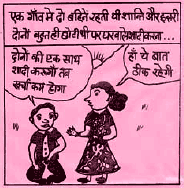
“Almost any issue, idea or fact can be expressed in a comic. This kind of visual storytelling is flexible, attention-grabbing and relatively inexpensive.”
World Comics is a non-profit organization in Finland and India that promotes the use of local comics as a means for social change. Grassroots Comics: A Development Communication Tool (PDF) is a free, downloadable manual for other non-governmental organizations about developing comics with community activists for use in their campaigns. See examples of grassroots comics in India and Africa, as well as videos and posters from grassroots comics workshops.
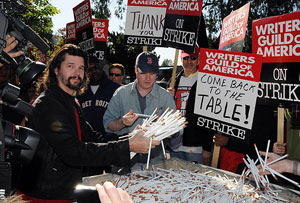
(After the demo, the pencils are donated to the public school children.)


